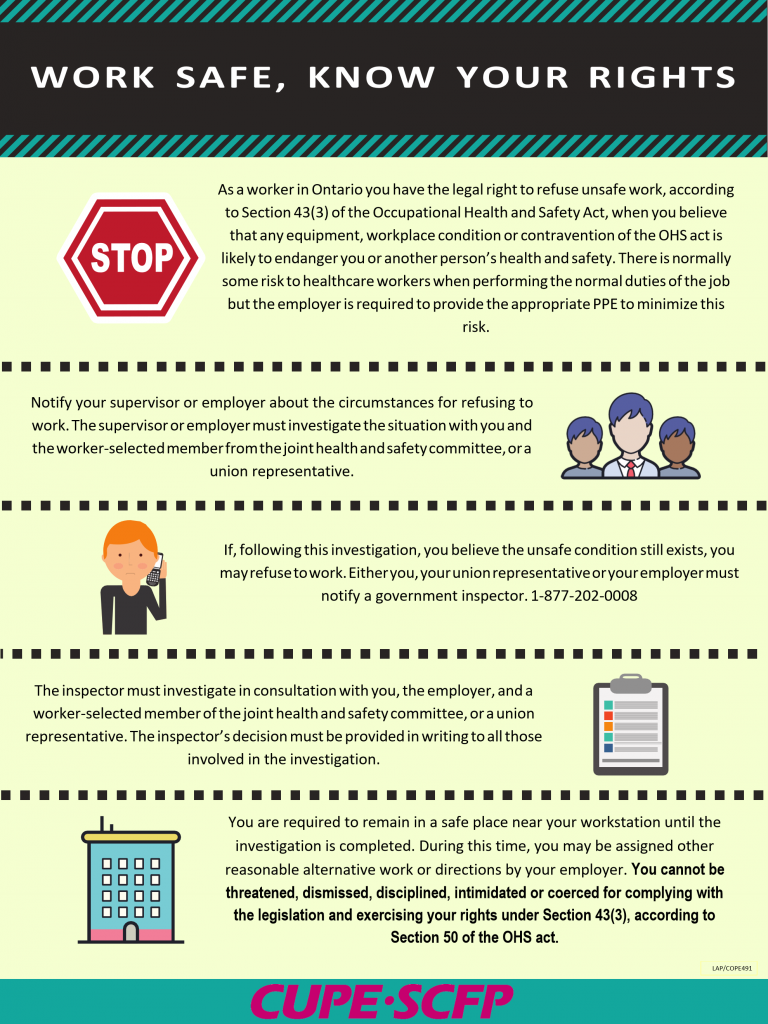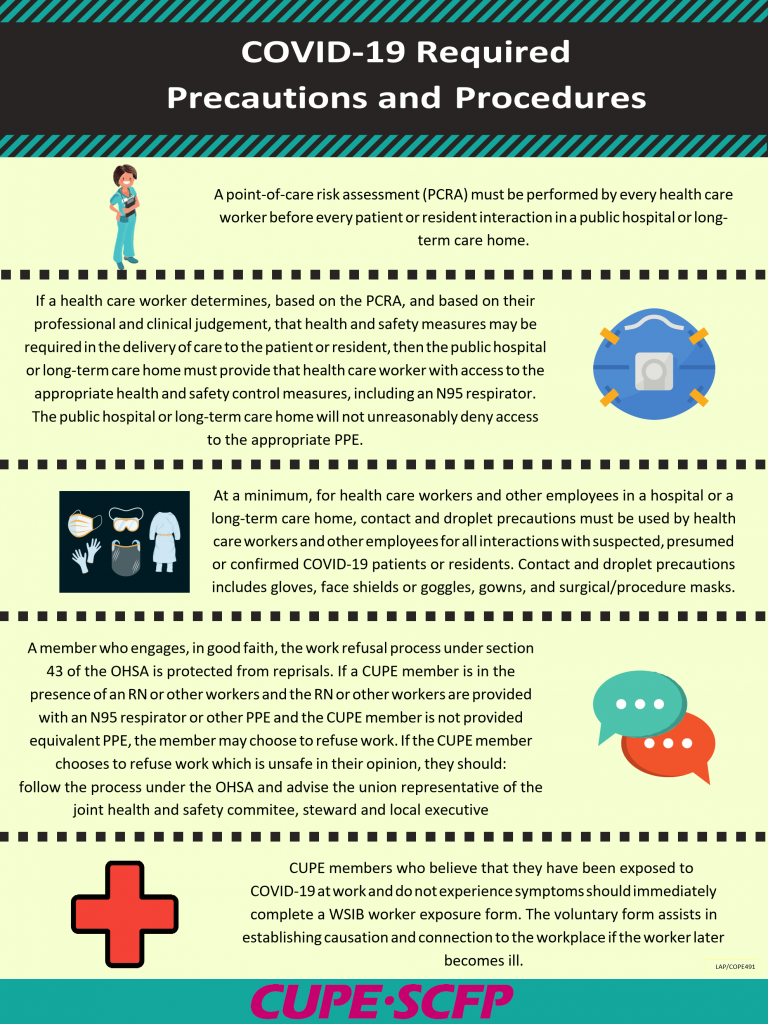FOR IMMEDIATE RELEASE MEDIA RELEASE APRIL 21, 2020
As outbreaks in Ontario long-term care homes continue
why are residents not being taken to hospital for higher care?
TORONTO, ON – As thousands of hospital staff from many different occupations selflessly volunteer to work in long-term care (LTC) homes afflicted with COVID-19 outbreaks, the Canadian Union of Public Employees (CUPE) is asking whether the decision not to transfer residents to hospital is sound.
In other jurisdictions, which are far more successful at containing COVID-19, long-term care residents are removed to a facility (like a hospital) where they can receive a higher level of care. This ‘isolation’ of residents who have COVID-19, protects those other residents who do not yet have the virus within the home – but are, because of their age or frail condition, at higher risk of infection. Ontario long-term care homes have not been able to apply normal social distancing – in the bedrooms, the shared toilets, the hallways where residents may wander, and the dining rooms. Removing COVID-19 patients from the long-term care homes will make this more possible.
Also, in other countries high testing rates of health care staff, residents and patients is key to containing the spread of COVID-19.
CUPE is asking the Ontario government to rethink some of its recent decisions and move residents with COVID-19 to hospital and to test more of the workforce and patient and resident populations in hospitals and long-term care. Most hospitals in Ontario currently have the capacity to handle these transfers.
“If the evidence is that you remove vulnerable residents with COVID-19 to centres and hospitals specifically set up for that purpose and engage in massive testing, why is the Ontario government going in the other direction? asks Michael Hurley president of CUPE’s Ontario Council of Hospital Unions (OCHU/CUPE). “The courage, compassion, expertise and altruism of the volunteers is very inspiring. But wouldn’t a more effective policy be to move COVID-19 residents out of their long-term care facility to hospital?”
As of midday Monday, 114 LTC homes were in outbreak, with 1,965 residents, staff, and others infected. Media reports that the Ontario government is under-reporting outbreaks in long-term care by as much as 40 per cent. Infected residents in long-term care are 47 per cent more likely to die than community COVID-19 cases.
Whatever is happening in the community, infection rates in long-term care are not peaking yet. “Sadly, there are many residents dying,” says CUPE Ontario secretary-treasurer Candace Rennick who is critical of the provincial government’s policy that redeploys hospital staff to long-term care.
“This is flawed, because while staff in long-term care are restricted to working at only one facility, hospital staff can return to their hospital, as long as they are asymptomatic”, says Rennick. “Given that these staff are being sent into long-term care facilities which are in outbreak, there is a risk that some staff will be allowed to return to their hospital position without undergoing testing or isolation.

